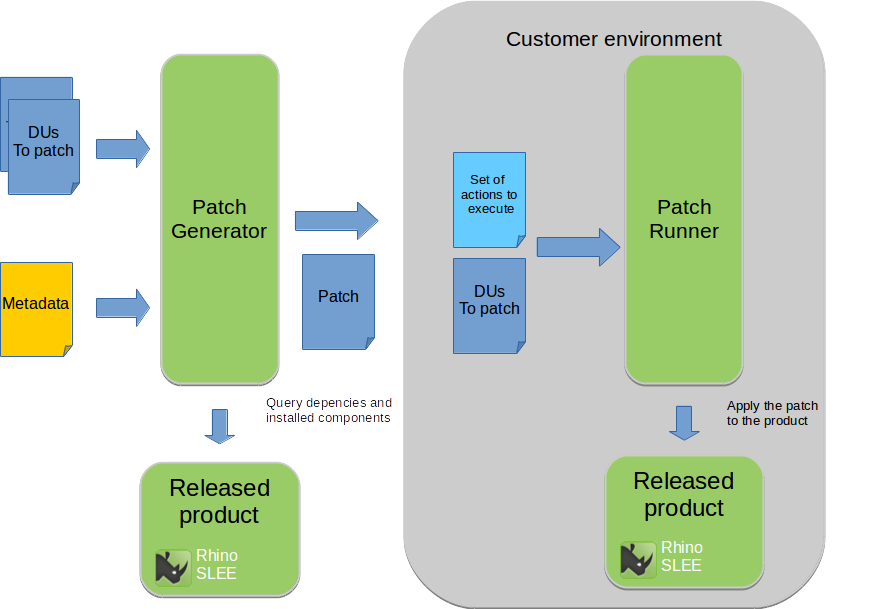
The patching tools consist of:
-
slee-patch-generator, which is used to create a patch -
slee-patch-runner, which is used to apply or revert a patch -
several scripts for managing cluster migration
-
orca, command-line tool used to distribute upgrade/patching tasks to multiple hosts, such as all hosts in a Rhino cluster, and it implements the cluster migration workflow.
The Patch Generator requires a running Rhino with the released software that will be patched. It takes as its main input the SLEE DUs or SLEE Jars (SLEE deployable unit) to be patched. The tool will query the live Rhino to capture the dependencies on services and other components. With that information it will generate a file that captures the dependencies and a set of actions to be taken in a precise order.
The Patch Runner tool is responsible for applying the patch. It takes as input the patch for the Rhino client for the product to be patched. The tool will run a checklist to check that the system is in the expected state. Checks include component names, version and the dependency tree. If the system is in a state that can be patched, the tool will install the new components according to the list of actions generated by the Patch Generator.
In general it is expected that the user will only ever run orca, and will do so from a dedicated linux management host
(normally the REM node, or the operator’s linux workstation).
orca must be able to access all hosts in the cluster over SSH without requiring a password. This can be accomplished
by setting up SSH host keys. orca also uses SSH to verify connectivity to the hosts before running a task.
orca requires to be logged in as the same user the Rhino system is running.
It needs to stop, start Rhino, create and delete files in the directory where the Rhino is installed.
